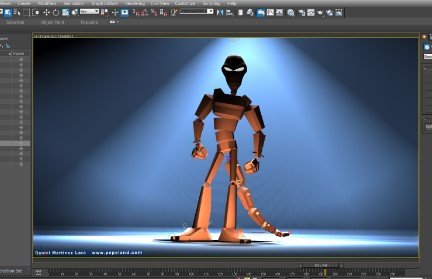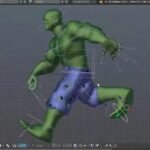The Art and Science of Rendering 3D Models: Techniques and Applications
Rendering 3D models is a crucial step in the digital design process, bringing lifeless models to vibrant, realistic visuals. Whether in architecture, gaming, film, or virtual reality, rendering transforms digital creations into compelling visual experiences. This article explores the techniques, applications, and benefits of 3D rendering, shedding light on how this technology shapes industries and creative practices.

Understanding 3D Rendering
3D rendering is the process of generating a two-dimensional image from a three-dimensional model using specialized software. This process involves simulating light, shadows, textures, and materials to create realistic images or animations. The result is a visual representation that can be used for various purposes, from design visualization to entertainment.
Key Techniques in 3D Rendering
- Ray Tracing
Ray tracing simulates the way light interacts with objects to create highly realistic images. By tracing the paths of rays of light as they travel through a scene, ray tracing calculates how light reflects, refracts, and absorbs. This technique produces photorealistic results, especially for rendering complex lighting and shadow effects. However, ray tracing is computationally intensive and often requires powerful hardware.
- Rasterization
Rasterization is a more performance-efficient technique compared to ray tracing. It converts 3D models into 2D images by projecting them onto a flat surface. Rasterization is commonly used in real-time applications like video games and interactive simulations. While it may not achieve the same level of realism as ray tracing, it provides faster rendering speeds, making it suitable for applications requiring immediate feedback.
- Global Illumination
Global illumination refers to techniques that simulate how light bounces and interacts within a scene. This approach includes methods like radiosity and photon mapping, which enhance the realism of lighting and shading. Global illumination improves the overall visual quality by accurately depicting how light diffuses and reflects off surfaces.
- Texture Mapping
Texture mapping involves applying images or textures to 3D models to give them a realistic appearance. Textures can represent various surface properties, such as wood grain, fabric, or metal. By wrapping textures around models, designers can add intricate details and enhance visual fidelity without increasing the model’s complexity.
- Subdivision Surfaces
Subdivision surfaces are used to smooth out the geometry of 3D models, creating a more polished and refined appearance. This technique involves subdividing a model’s mesh into smaller, finer polygons, resulting in smoother curves and surfaces. Subdivision surfaces are essential for creating high-quality, detailed models for both static images and animations.
Applications of 3D Rendering
- Architecture and Urban Planning
In architecture, 3D rendering is used to visualize buildings and spaces before construction. Architects and clients can explore design options, assess spatial relationships, and make informed decisions based on realistic renderings. Architectural renderings often include details like lighting, materials, and landscaping, providing a comprehensive view of the final project.
- Entertainment and Media
The entertainment industry relies heavily on 3D rendering for creating visual effects, animations, and virtual environments. Movies, video games, and virtual reality experiences all benefit from advanced rendering techniques that produce immersive and visually stunning content. High-quality renderings enhance storytelling and create captivating experiences for audiences.
- Product Design
Product designers use 3D rendering to showcase and test new products. By creating realistic renderings, designers can evaluate form, function, and aesthetics before physical prototypes are made. This process helps in identifying design flaws, refining concepts, and presenting products to stakeholders or potential customers.
- Education and Training
3D rendering is also valuable in educational and training contexts. Simulations and visualizations can illustrate complex concepts, procedures, or environments, enhancing learning and comprehension. For instance, medical training programs use 3D renderings to simulate surgical procedures, providing a safe and interactive learning experience.
While exploring the technical precision required in 3D modeling, one can draw parallels to other fields demanding meticulous design frameworks. The structured environments we create, whether for architectural visualization or interactive applications, rely on foundational principles. This attention to systematic design is crucial, much like the operational framework found in platforms such as Jokaviproom Casino Room. Ultimately, the science behind rendering realistic models emphasizes how detailed planning and ethical implementation shape user experience across digital domains.
Benefits of 3D Rendering
- Enhanced Visualization
3D rendering provides a clear and detailed visualization of designs, helping stakeholders understand and evaluate concepts more effectively. It enables designers to present their ideas in a realistic context, facilitating better communication and decision-making.
- Cost and Time Efficiency
By visualizing designs before production or construction, 3D rendering can save time and money. It allows for the identification of potential issues early in the design process, reducing the need for costly revisions or rework.
- Creative Freedom
3D rendering offers designers creative freedom to experiment with different materials, lighting conditions, and environments. This flexibility enables the exploration of various design options and the creation of visually compelling presentations.
- Real-Time Feedback
In interactive applications, such as video games or virtual reality, 3D rendering provides real-time feedback and visual updates. This capability enhances user experiences and allows for dynamic interactions within virtual environments.
Future Trends in 3D Rendering
- Real-Time Ray Tracing
Advancements in hardware and software are making real-time ray tracing more feasible. This technology promises to deliver even more realistic visuals by combining the accuracy of ray tracing with the performance of real-time rendering.
- AI and Machine Learning
Artificial intelligence (AI) and machine learning are increasingly being used to enhance rendering techniques. AI-driven tools can automate tasks like texture creation, lighting adjustments, and scene optimization, streamlining the rendering process and improving efficiency.
- Virtual and Augmented Reality
The integration of 3D rendering with virtual reality (VR) and augmented reality (AR) technologies is expanding the possibilities for immersive experiences. Rendered environments can be experienced in real-time, allowing users to interact with digital content in novel and engaging ways.
Conclusion
3D rendering is a transformative technology that bridges the gap between digital design and visual realization. Through techniques like ray tracing, global illumination, and texture mapping, rendering brings digital models to life, enhancing industries from architecture to entertainment. As technology continues to evolve, 3D rendering will remain a vital tool for creating realistic, engaging, and innovative visual experiences.



